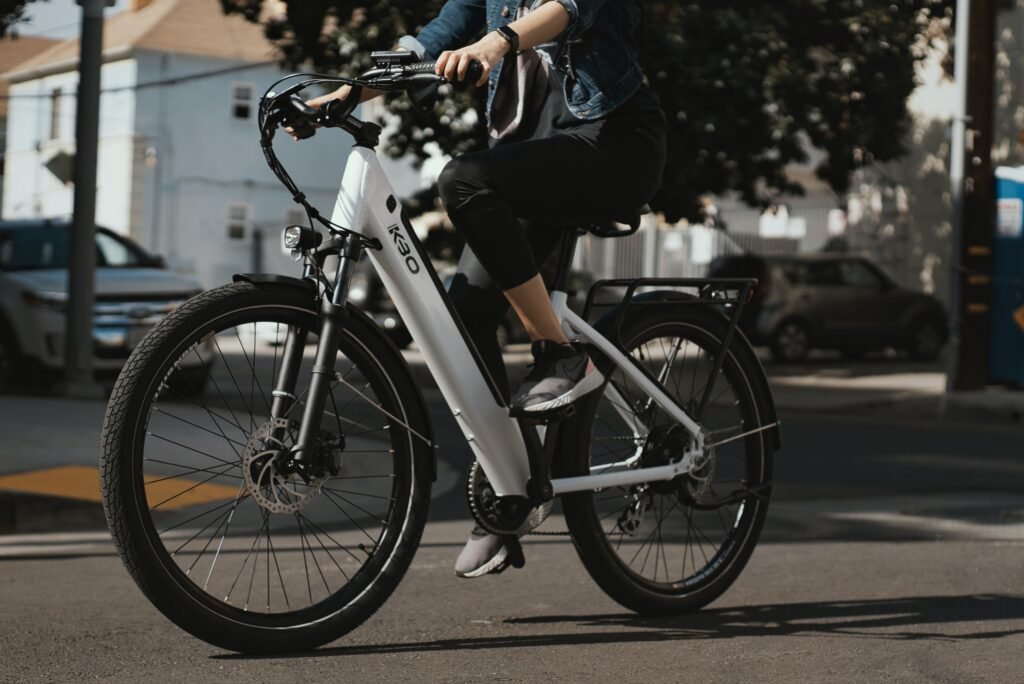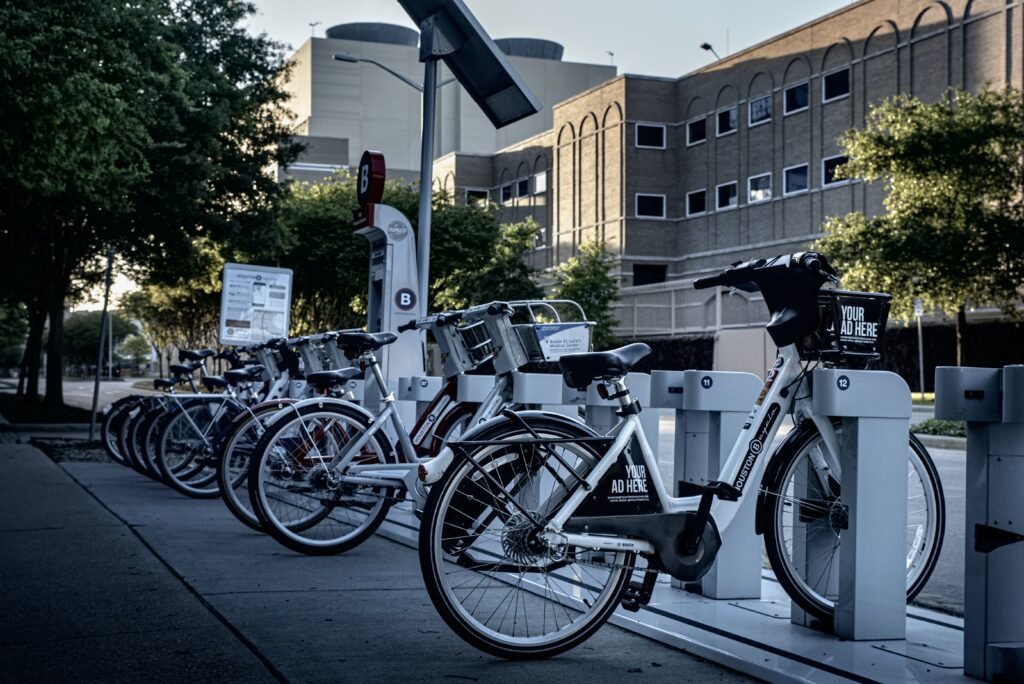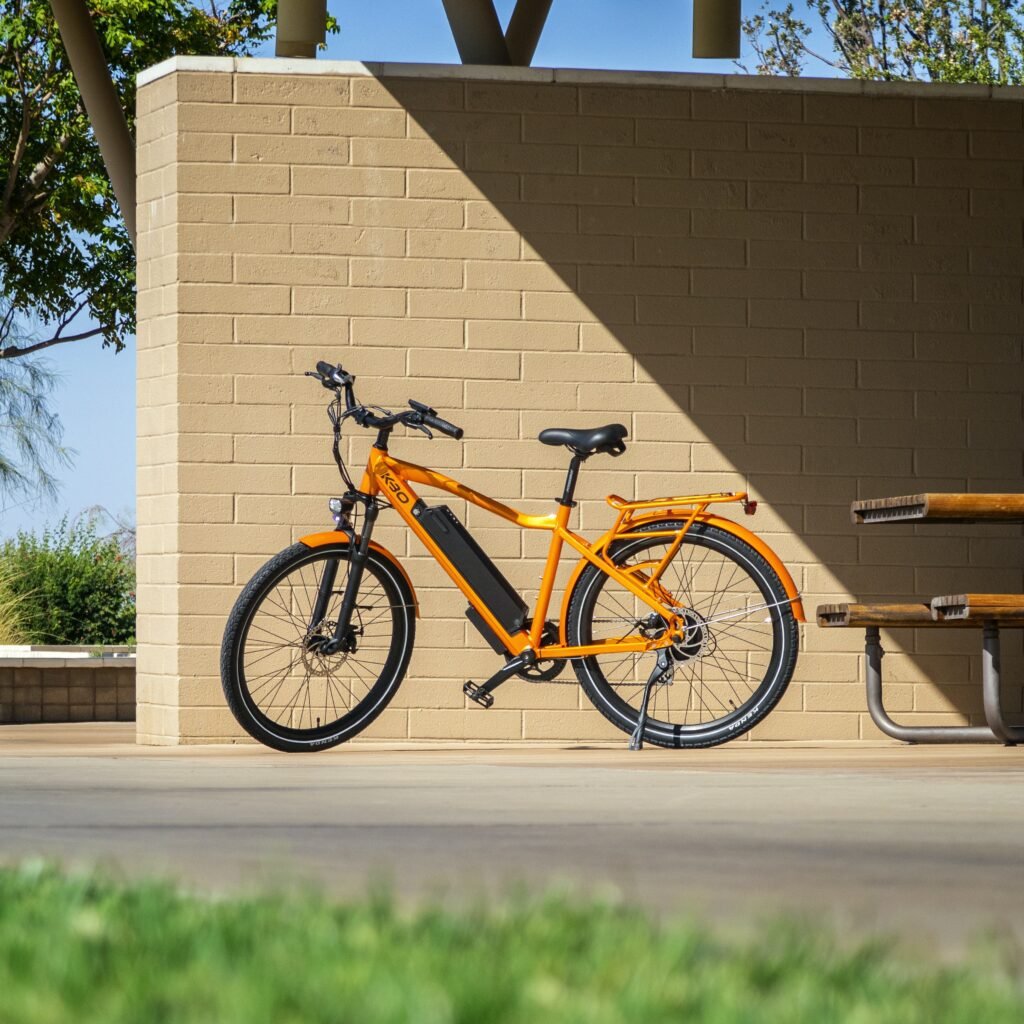Thinking about embarking on a long-distance touring adventure? You may be wondering if an electric bike is a suitable option to tackle those miles ahead. Well, let us put your uncertainties to rest and assure you that yes, you absolutely can use an electric bike for long-distance touring! With their growing popularity and advancements in technology, electric bikes have become a viable and eco-friendly alternative for those seeking to explore the open road on two wheels. In this article, we will explore the benefits and considerations of using an electric bike for long-distance touring, leaving you excited and ready to embark on your next thrilling journey.

Factors to Consider
When considering using an electric bike for long-distance touring, there are several important factors to take into account. These factors will help determine the most suitable electric bike for your needs and ensure a comfortable and enjoyable touring experience.
1.1 Terrain
The terrain you will be traveling on is a crucial factor to consider when choosing an electric bike for long-distance touring. Different electric bikes are designed to handle varying terrains, such as uphill climbs, rough off-road trails, or flat surfaces. It is important to select an electric bike that can handle the specific terrain you will encounter during your touring adventures.
1.2 Battery Life
Battery life is another critical aspect to consider, as it directly impacts the range and duration of your long-distance tours. The battery capacity of an electric bike determines how far you can travel on a single charge. It’s essential to evaluate the battery life and choose an electric bike with a battery that can meet your touring needs without frequent recharging.
1.3 Weight
The weight of the electric bike plays a significant role in long-distance touring. A lighter bike will be easier to handle and maneuver, especially when encountering uphill climbs or navigating through challenging terrains. Consider the weight of both the bike itself and any additional cargo capacity required for your touring adventures.
1.4 Motor Power
The motor power of an electric bike is directly related to its performance. A more powerful motor will provide better assistance, particularly on steep inclines or rough terrains. Consider the motor power of the electric bike to ensure it can handle the demands of your long-distance touring.
1.5 Speed
The speed at which an electric bike can travel is worth considering for long-distance touring. Different electric bikes have varying maximum speeds, and it’s important to determine if these speeds meet your touring requirements. Additionally, be mindful of the legal speed limitations in the areas where you plan to tour.
1.6 Comfort
Long-distance touring requires a high level of comfort to ensure an enjoyable experience. Consider the bike’s frame geometry, suspension systems, saddle, handlebars, and grips when evaluating its comfort level. Adequate comfort features will help reduce fatigue and discomfort during long hours of riding.
1.7 Cost
The cost of an electric bike is a significant factor to consider when planning for long-distance touring. Determine your budget and evaluate the initial investment as well as any ongoing maintenance expenses associated with the electric bike. Additionally, consider any insurance coverage you may need and the potential costs of necessary upgrades and accessories.
1.8 Charging Facilities
Charging facilities play a crucial role in long-distance touring with an electric bike. Evaluate the charging infrastructure along your tour route to ensure you have access to charging stations. Additionally, consider alternative charging options such as battery swapping stations, portable chargers, or even solar power solutions to ensure a continuous power supply during your tour.
1.9 Maintenance
Regular maintenance is essential for any vehicle, including electric bikes used for long-distance touring. Consider the maintenance requirements of the electric bike you are considering and ensure you have access to reliable and knowledgeable technicians for servicing and repairs. Understanding the necessary maintenance tasks will help keep your electric bike in optimal condition during your tours.
1.10 Safety
Safety should always be a top priority when embarking on long-distance touring, regardless of the vehicle you choose. Consider safety precautions such as wearing a helmet and appropriate safety gear, ensuring visibility through reflectors and proper lighting, and familiarizing yourself with traffic laws and regulations. Additionally, hone your riding skills and be prepared for emergencies by carrying essential tools and equipment.
2. Terrain and Electric Bike Performance
Understanding how different terrains affect electric bike performance is crucial for long-distance touring. Evaluating how well an electric bike can handle various terrains will help you choose the most suitable bike for your touring adventures.
2.1 Uphill Climbing Ability
When touring long distances, you’re likely to encounter uphill climbs. Consider the electric bike’s ability to climb hills and choose one with sufficient motor power and torque capabilities. A powerful motor with adequate assistance will enable you to conquer steep inclines effortlessly.
2.2 Downhill Descending and Braking
Descents can be equally challenging, especially when dealing with long or steep downhill sections during your tour. Evaluate the electric bike’s braking system and ensure it provides reliable and efficient stopping power. Additionally, look for features such as regenerative braking that can help recharge the battery while descending.
2.3 Off-road and Rough Terrains
If your tour includes off-road sections or rough terrains, choose an electric bike with robust construction and off-road capabilities. Look for features such as sturdy suspension systems, wide and durable tires, and adequate ground clearance to handle these challenging terrains.
2.4 Flat Surfaces
While touring, you may encounter long stretches of flat surfaces. If these sections make up a significant part of your tour, consider an electric bike with a higher top speed. This will allow you to cover more ground efficiently and maintain a comfortable pace.
3. Battery Life and Range
Battery life and range are essential considerations for long-distance touring with an electric bike. Understanding the factors that influence battery life and range will help you plan your tours accordingly.
3.1 Range Anxiety
Range anxiety refers to the fear of running out of battery power before reaching your destination. It is important to choose an electric bike with a battery capacity that provides the desired range for your touring needs. Evaluate the estimated range of the electric bike and consider any additional factors that may impact the actual distance you can travel on a single charge.
3.2 Battery Capacity
The battery capacity of an electric bike determines how far you can travel before needing to recharge. Consider the size of the battery and its energy storage capabilities. High-capacity batteries will provide longer ranges but may also add weight to the bike.
3.3 Pedal Assist Mode
Using the pedal assist mode effectively can help extend the battery life and range of your electric bike. Evaluate the different levels of pedal assist available on the bike and determine which setting is appropriate for different sections of your tour. Using lower assist levels on flat sections or when descending can help conserve battery power for when you need it most, such as during uphill climbs.
3.4 Riding Style and Effort
Your riding style and effort exerted also play a role in battery life and range. Conserving energy by employing efficient pedaling techniques and utilizing the assistance provided by the electric bike judiciously will help prolong battery life. Understanding how your riding style and effort influence the battery performance can help you plan and adapt during your long-distance tours.
3.5 Terrain Influence
The terrain you encounter during your tours will influence the battery life and range of your electric bike. Uphill climbs and rough terrains require more motor power and assistance, resulting in increased energy consumption. Conversely, flat surfaces and downhill stretches may allow for more efficient use of the battery, as less assistance and power are needed.
3.6 Monitoring and Pacing
Monitoring your battery level during your tours is essential for planning your charging stops and ensuring you have enough power to reach your intended destinations. Pace your tour accordingly, considering the battery life and range of your electric bike. Plan your daily distances and charging stops strategically to avoid being stranded with depleted battery power.
3.7 Charging Options
Consider the availability of charging options along your tour route. While planning your long-distance touring, research the locations of charging stations and ensure they are conveniently accessible. Additionally, consider alternative charging options such as battery swapping stations or portable chargers to ensure you have backup solutions in case traditional charging infrastructure is limited.
4. Weight Considerations
The weight of both the electric bike itself and any additional cargo or gear you plan to carry should be taken into account for long-distance touring. The overall weight directly affects the bike’s handling, performance, and range.
4.1 Bike Weight
The weight of the electric bike itself can have a significant impact on touring performance. A lighter bike will be easier to handle and control, making it more maneuverable during uphill climbs or when navigating through rough terrains. Consider electric bikes that prioritize lightweight construction without compromising durability and performance.
4.2 Rider Weight
Your own weight as the rider also influences the overall weight of the electric bike. If you are carrying additional gear or planning for extended tours, it’s important to consider your own weight when evaluating the bike’s capacity, motor power, and overall performance. Ensure the electric bike is capable of carrying your weight comfortably.
4.3 Cargo Capacity
If you plan on carrying extra gear, luggage, or supplies during your long-distance tours, evaluate the cargo capacity of the electric bike. Consider features such as racks, panniers, or baskets that allow for secure and convenient storage of your belongings. Choose an electric bike with adequate cargo capacity to accommodate your touring needs.

5. Motor Power and Performance
The motor power of an electric bike greatly influences its performance during long-distance touring. Understanding the different aspects of motor power and performance will help you choose an electric bike that meets your touring requirements.
5.1 Motor Types
Electric bikes typically have different types of motors, such as hub motors or mid-drive motors. Hub motors are integrated into the wheel hub, providing direct power to the wheel. Mid-drive motors are located near the bike’s bottom bracket, connecting directly to the drivetrain. Evaluate the pros and cons of different motor types to determine which one suits your touring preferences and requirements.
5.2 Power Output (Wattage)
The power output of the electric bike’s motor is measured in watts. Higher wattage motors generally provide more assistance and power, particularly in challenging terrains or during uphill climbs. Consider the required power output for the type of touring you intend to undertake and choose an electric bike with an appropriate motor wattage.
5.3 Pedal Assist Modes
Pedal assist modes allow you to control the level of assistance provided by the motor while pedaling. Evaluate the different pedal assist modes available on the electric bike and determine which ones suit your touring style. Selecting lower assist levels when power is not needed can help maximize battery life and range.
5.4 Torque Sensors vs. Cadence Sensors
Some electric bikes utilize torque sensors, which measure the force applied to the pedals, while others use cadence sensors, which monitor the speed at which the pedals are being turned. Torque sensors provide a more intuitive and responsive riding experience, adjusting the motor assistance according to the rider’s effort. Cadence sensors provide a consistent level of assistance but may not be as responsive to the rider’s input. Consider the type of sensor used and choose one that aligns with your desired riding experience.
5.5 Noise Level
Motor noise can impact the overall touring experience, particularly for those seeking a quiet and peaceful ride. Evaluate the noise levels produced by the electric bike’s motor and consider whether it aligns with your preferences. Some motors are designed to be quieter and more discreet, providing a more enjoyable and serene touring experience.
5.6 Heat Dissipation
Electric bike motors generate heat during operation, especially during prolonged or demanding tours. Evaluate how well the electric bike’s motor dissipates heat to prevent overheating and potential performance issues. Adequate heat dissipation ensures the motor operates optimally and prolongs its lifespan.
6. Speed and Efficiency
Speed and efficiency are key factors to consider when planning for long-distance touring with an electric bike. Understanding the various aspects related to speed and efficiency will help you make informed decisions during the selection process.
6.1 Legality and Speed Limitations
Different regions and jurisdictions may have specific laws and regulations regarding electric bike speeds. Research and understand the legality of electric bike speeds in the areas where you plan to tour. Ensure that the maximum speed of the electric bike you choose aligns with the speed limitations imposed by local authorities.
6.2 Average Speeds
Consider the average speeds you intend to maintain during your long-distance tours. Evaluate the maximum speed capabilities of the electric bike and determine if they meet your desired touring speed requirements. Remember that faster speeds may impact battery life and range, so find a balance that suits your needs.
6.3 Pedal Assist vs. Throttle Control
Electric bikes commonly offer both pedal assist and throttle control modes. Pedal assist requires the rider to pedal in order to engage the motor assistance, providing a more active and engaging riding experience. Throttle control allows the rider to simply twist or press a throttle to activate the motor assistance, providing a more effortless and relaxed riding experience. Consider your preferences and select an electric bike with the appropriate mode for your touring style.
6.4 Riding Efficiency
Efficient riding techniques can help maximize battery life and range, as well as improve overall touring performance. Learn and implement efficient pedaling techniques to make the most of the electric bike’s assistance. Maintain a smooth and steady cadence, avoid unnecessary braking or accelerating, and take advantage of the electric bike’s power to conserve your own energy during long-distance touring.

7. Comfort and Ergonomics
Comfort and ergonomics are crucial factors to consider for long-distance touring with an electric bike. A comfortable riding experience minimizes fatigue and enhances overall enjoyment during your tours.
7.1 Frame Geometry
Evaluate the frame geometry of the electric bike to ensure it provides a comfortable riding position and fits your body proportions. Consider factors such as frame size, standover height, and handlebar reach. A properly sized and ergonomically designed frame will help reduce strain on your body and provide a comfortable and efficient riding experience.
7.2 Suspension Systems
Suspension systems play a critical role in smooth and comfortable rides, especially when encountering rough terrains or uneven surfaces during long-distance touring. Evaluate the type and quality of suspension systems on the electric bike, such as front forks or rear shock absorbers. Adequate suspension will help absorb impacts and vibrations, providing a smoother and more comfortable ride.
7.3 Saddle
The saddle, or seat, of the electric bike directly impacts comfort during prolonged tours. Evaluate the shape, padding, and width of the saddle to ensure it suits your anatomy and provides adequate support. Consider more ergonomic or specialized saddles if needed, and test different options to find the most comfortable one for your long-distance touring needs.
7.4 Handlebars and Grips
Handlebars and grips contribute significantly to overall comfort and control during rides. Evaluate the handlebar design, width, and shape to ensure it suits your preferred riding position and provides comfortable hand placement. Consider ergonomic grips with padding or contours to reduce hand fatigue and improve grip during long rides.
7.5 Accessories
Accessories such as fenders, racks, lights, and bells can enhance your touring experience. Fenders help protect you from splashes and mud, while racks provide convenient storage options for your gear. Lights increase visibility and safety, especially during low-light conditions, and bells help alert others to your presence. Consider which accessories would benefit your long-distance touring needs and ensure the electric bike can accommodate or be easily accessorized.
8. Cost Considerations
Cost considerations are essential when planning for long-distance touring with an electric bike. Understanding the financial aspects involved will help you budget effectively for your tours.
8.1 Initial Investment
The initial investment required for an electric bike can vary significantly depending on the brand, model, features, and quality. Evaluate your budget and determine the range of electric bikes that fall within your financial capabilities. Consider any necessary additional costs, such as accessories or gear, and ensure they are factored into your initial investment.
8.2 Maintenance Expenses
Ongoing maintenance expenses are an important consideration for the long-term costs of an electric bike. Evaluate the expected maintenance requirements of the electric bike you choose, such as regular servicing, battery replacements, or component wear and tear. Research the costs associated with these maintenance tasks to accurately assess the overall expense of owning and maintaining the electric bike.
8.3 Insurance
Insurance coverage for your electric bike may be necessary, depending on local regulations and personal preferences. Evaluate the insurance options available for electric bikes, including coverage for theft, damage, and liability. Consider the cost of insurance premiums and how they fit into your overall budget for long-distance touring.
8.4 Upgrades and Accessories
Additional upgrades and accessories may enhance your touring experience but come with additional costs. Evaluate the potential upgrades or accessories you may want or need for your electric bike, such as higher-capacity batteries, specialized tires, or navigation systems. Research the costs associated with these upgrades and assess their importance and value for your long-distance touring needs.

9. Charging Facilities and Accessibility
When planning for long-distance touring with an electric bike, it’s crucial to consider the availability and accessibility of charging facilities. Ensuring you have reliable and convenient charging options along your tour route will help maintain a continuous power supply.
9.1 Charging Infrastructure
Research the charging infrastructure available along your planned tour route. Evaluate the availability and location of charging stations, as well as the charging speeds and cost. Plan your daily distances and charging stops accordingly to make the most efficient use of the available charging infrastructure.
9.2 Battery Swapping Stations
Battery swapping stations provide an alternative to traditional charging stations, allowing you to quickly swap depleted batteries for fully charged ones. Explore if battery swapping stations are available on your tour route and consider the convenience and potential cost benefits they offer. Ensure your electric bike is compatible with any battery swapping systems you may encounter.
9.3 Portable Chargers
Portable chargers are a valuable accessory for long-distance touring with an electric bike. Evaluate portable charger options that are compatible with your electric bike’s battery system. Portable chargers allow you to recharge your electric bike’s battery at any standard power outlet, providing flexibility and convenience during your tours.
9.4 Solar Power Solutions
Solar power solutions can provide an environmentally friendly and sustainable way to charge your electric bike’s battery while on long-distance tours. Explore portable solar charging options that are compatible with your electric bike’s battery system. Solar power solutions can be particularly useful in remote areas or when accessing traditional charging infrastructure is limited.
11. Safety Precautions
Safety should always be a top priority when embarking on long-distance touring with an electric bike. Taking necessary safety precautions will ensure a safe and enjoyable touring experience.
11.1 Helmet
Wearing a helmet is essential for protecting your head during rides. Always wear a properly fitted and certified helmet that meets safety standards. Choose a helmet that prioritizes comfort and ventilation to ensure a pleasant touring experience.
11.2 Safety Gear
In addition to a helmet, consider wearing appropriate safety gear such as knee and elbow pads, gloves, and reflective clothing. Safety gear provides protection and enhances visibility, reducing the risk of injuries and accidents during your long-distance tours.
11.3 Visibility
Visibility is crucial for ensuring your safety on the road. Equip your electric bike with appropriate lights, reflectors, and reflective accessories to enhance your visibility to other motorists. Use high-visibility clothing and accessories to make yourself more noticeable, especially during low-light conditions.
11.4 Traffic Laws and Regulations
Familiarize yourself with the traffic laws and regulations of the areas where you plan to tour. Understand and obey speed limits, traffic signals, and other rules of the road. Follow local cycling regulations and be mindful of any specific rules or restrictions regarding electric bikes.
11.5 Riding Skills
Developing and honing your riding skills will greatly contribute to safe and enjoyable long-distance touring. Practice riding techniques that improve control, stability, and maneuverability. Learn proper signaling, braking, and defensive riding skills to ensure your safety on the road.
11.6 Emergency Preparedness
Be prepared for unexpected situations or emergencies during your long-distance tours. Carry essential tools and equipment, such as tire repair kits, a multi-tool, spare batteries, and a first aid kit. Learn basic maintenance tasks and troubleshooting techniques to address any minor mechanical issues that may arise while on the road.
In conclusion, using an electric bike for long-distance touring can provide a thrilling and unique experience. Consider important factors such as terrain, battery life, weight, motor power, speed, comfort, cost, charging facilities, maintenance, and safety when selecting the right electric bike for your touring adventures. By understanding these factors and making informed decisions, you can ensure a comfortable, enjoyable, and safe long-distance touring experience with an electric bike.


